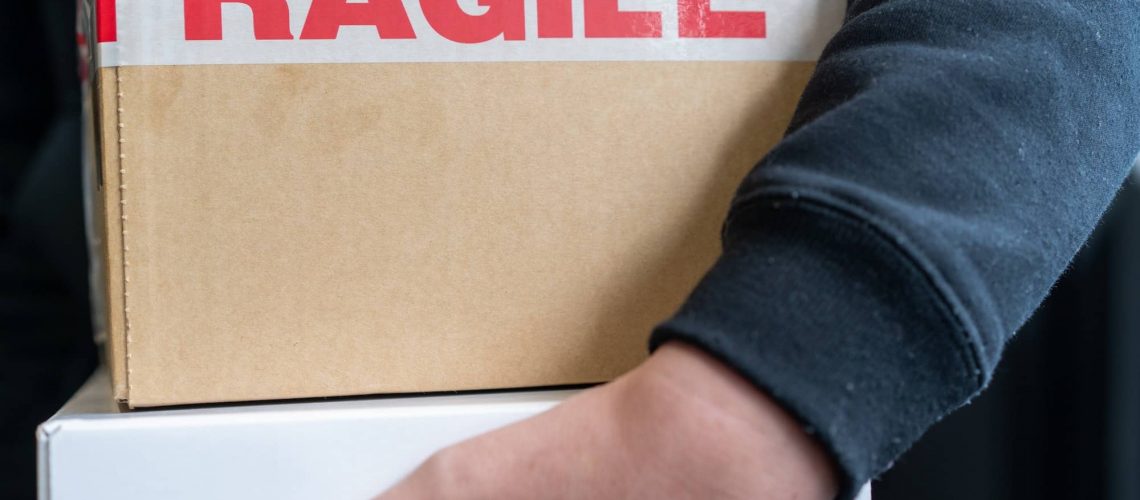As any mover knows, packing fragile items correctly is essential when it comes to avoiding damage. But without the right advice and approach, getting your delicate belongings safely from A to B can be an intimidating task. To help make sure your precious possessions arrive in one piece, we’ve put together this comprehensive guide on best practices for packing fragile items.
Expert Tips for Packing Fragile Items
Start With the Right Supplies

The most important part of successfully packing fragile items is having the right supplies. You’ll want to have a range of materials handy to keep breakable objects safe during transit, including:
- Bubble wrap.
- Packing peanuts.
- Cardboard boxes (both plain and reinforced).
- Strong tape.
- Scissors or razor blades (if needed).
- Pens for labelling.
- A few old blankets for extra padding.
If you’re packing items like artwork or photographs that can’t get wet, ensure you use weatherproof protective wrap. You can also use tea towels to add some extra support in crockery boxes, since they’re both in the same room.
When using bubble wrap and packing peanuts, it’s as much about using them to create a snug fit as much as it is providing a cushioned, protective barrier.
Label your boxes and items correctly.
When packing fragile items to avoid damage in transit, you need to be sure to label your boxes and items with what is in them, what room they are for and indicators of what contains fragile items. This allows anyone else who is picking up that box to know what’s inside and if they should pay a little extra attention to how they carry it and put it down.
If you’re packing your own boxes but hiring a removalist, it’s especially important to mark boxes as right side up and fragile if there are breakables inside.
Strategically place your items.
It’s not only the size of your items you need to be wary of when packing, but their weight too. When packing fragile items, it’s important to consider the weight of each object and its effect on the stability of your box.
Heavier objects should always be placed towards the bottom of a box to create a more balanced centre of gravity when you pick up and stack the boxes. You also want to make sure smaller items are securely packed in between larger ones so they don’t move around too much during transit.
Use reinforced cardboard boxes for maximum protection.
Double-walled cardboard boxes are a must when packing fragile items to avoid damage during transit. The extra protection from reinforced cardboard boxes helps cushion your items and provide some extra tension against pressure if things slide around.
Thicker cardboard also helps give that little extra resistance from moisture and humidity.
All it takes is a hot humid day and a sticky surface to weaken the bottom of a box and have everything come crashing down — literally. And while they say rain on a moving day is good luck, it’s not good for moving those valuables!
Double check everything before you go.
Before you move your fragile items, check the boxes one last time to make sure they are tightly sealed and don’t get damaged during packing. Make sure all labels on the box are still legible, helping ensure movers handle each container with care.
Also take a few moments to double-check none of your possessions have been left behind – once the doors are closed for transit, it can be difficult to access them if something is forgotten!

By following these best practices for packing fragile items, you should have everything you need to transport your delicate possessions safely and securely. With the right supplies, strategic placement of items, and thorough labelling, you can make sure your most prized belongings arrive in one piece.

